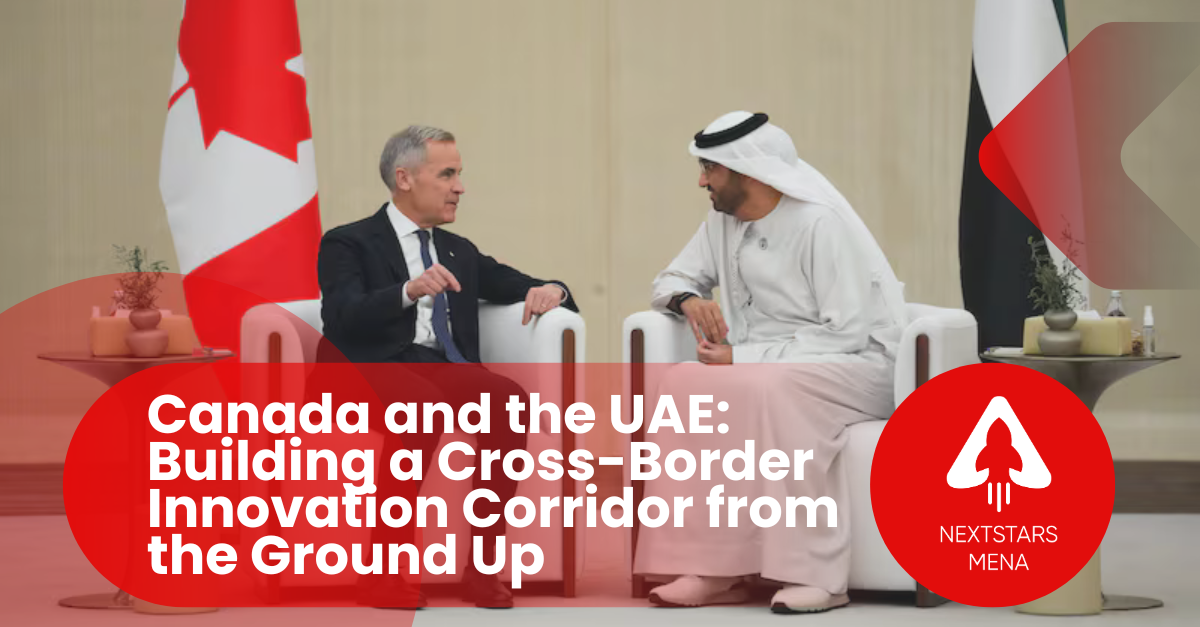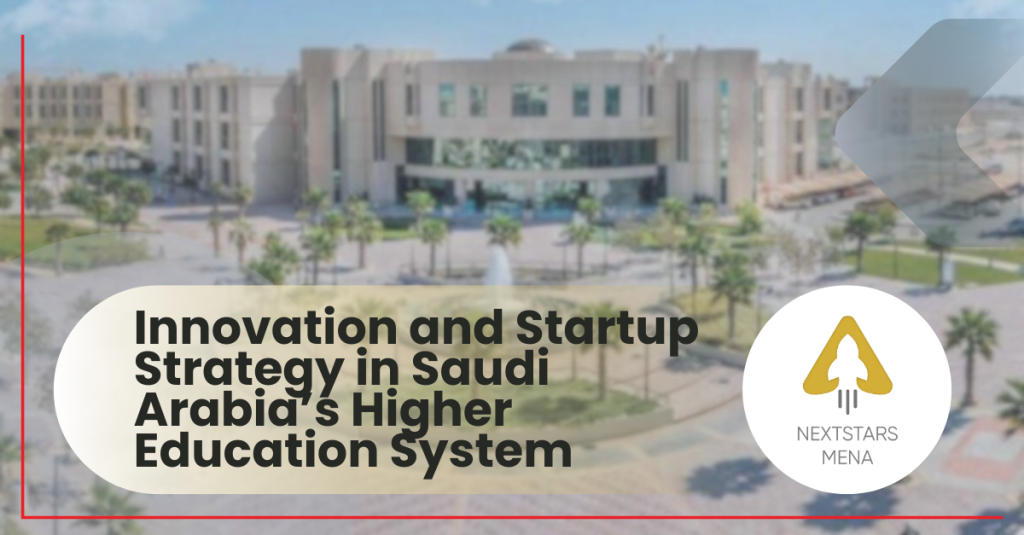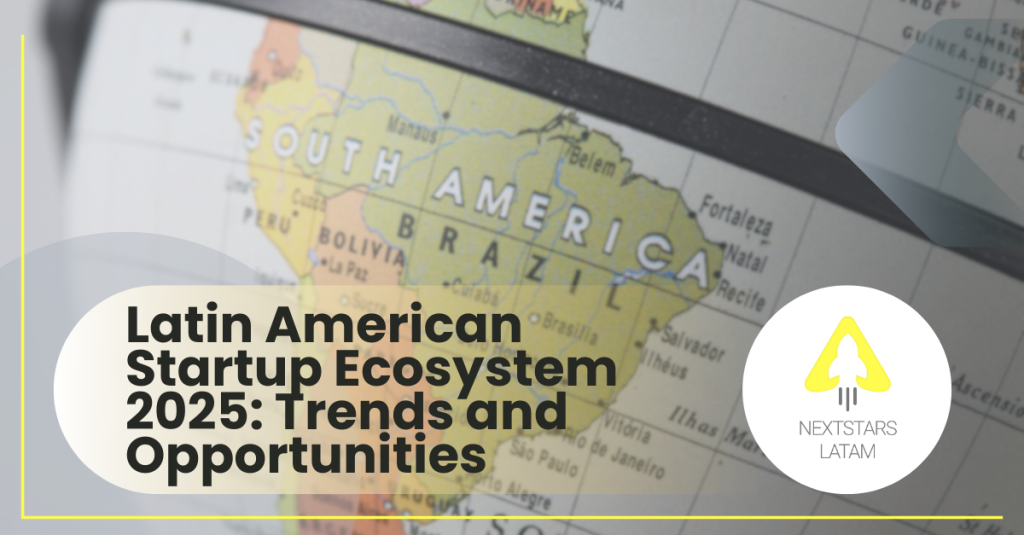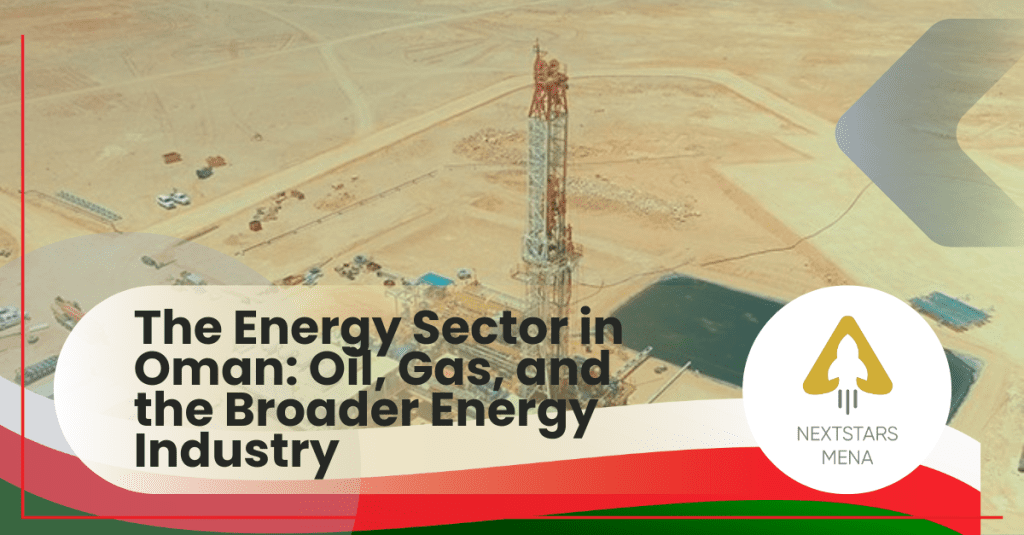The timing couldn’t be more strategic. As Prime Minister Mark Carney touches down in Abu Dhabi for Canada’s first prime ministerial visit to the UAE since 1983, he’s not just chasing capital investment. He’s laying the groundwork for what could become one of the most consequential cross-border innovation partnerships of the decade. For those of us building global companies from immigrant entrepreneurship, this moment represents far more than a diplomatic handshake. It signals the opening of serious infrastructure for technology transfer, venture capital flows, and startup ecosystem integration between two nations that are perfectly positioned to solve each other’s challenges.
The Historical Foundation: More Than 50 Years in the Making
Canada and the UAE marked their 50th anniversary of diplomatic relations in 2024, but the innovation chapter of this relationship is just beginning to be written. While bilateral trade reached $3.4 billion in 2024, with over 150 Canadian companies maintaining operations in the UAE, the depth of innovation collaboration has historically lagged behind the commercial relationship.
That’s changing rapidly. In October 2025, Canada and the UAE signed a groundbreaking MoU on AI and data center infrastructure, creating a formal framework for expertise exchange, joint R&D projects, and investment in advanced technology sectors. The agreement followed months of high-level engagement, including UAE Deputy Prime Minister Sheikh Abdullah bin Zayed Al Nahyan’s June 2025 visit to Canada and a Canadian innovation delegation to Riyadh, Abu Dhabi, and Dubai that brought together government leaders, research institutions, and venture capital firms from both countries.
The UAE’s recognition as Country of Honour at ALL IN 2025, Canada’s largest AI event, showcased the depth of emerging collaboration. This wasn’t ceremonial recognition. It represented the UAE’s serious ambition to position itself as a global AI destination and Canada’s recognition that its world-class AI research ecosystem needs capital and market access partnerships to commercialize at scale.
The VC Landscape: Two Ecosystems at Different Inflection Points
Understanding the venture capital dynamics in both countries reveals why this partnership makes strategic sense.
Canada’s Maturing Ecosystem
Canada deployed CAD 7.9 billion across 592 deals in 2024, with the ecosystem holding an additional $11.5 billion in dry powder. The Canadian VC landscape has evolved considerably, with strong concentrations in Toronto (40% of deals), Montreal (AI and deep tech), Vancouver (climate tech and gaming), and emerging hubs like Ottawa and Waterloo. Key sectors attracting capital include AI (CAD 2.4 billion in Q1 2024 alone across 143 deals), fintech, climate technology, and life sciences.
Canadian strengths include world-class AI research anchored by institutions like Mila, the Vector Institute, and AMII, robust government support through SR&ED tax credits (providing 35-60% R&D cost recovery), and programs like the Venture Capital Action Plan and Innovative Solutions Canada. The ecosystem has produced global champions like Shopify, Lightspeed, and Wealthsimple, demonstrating the capacity to build at scale.
The challenge? Exit activity remains weak, with a continued IPO drought and limited M&A deals. This has created a 10-year IRR gap with the US, and foreign capital, particularly from American VCs, continues to play a crucial role. Trade tensions and tariff threats are now forcing Canadian founders and policymakers to think seriously about economic diversification.
The UAE’s Capital-Rich, Rapidly Scaling Environment
The UAE presents a starkly different profile. MENA startup funding hit $4.5 billion in Q3 2025 alone, with the UAE capturing $1.2 billion across 59 deals. Dubai-based startups were responsible for 96% of capital raised in the UAE during Q1 2025. The region has produced eight unicorns between 2020 and H1 2025, with the UAE anchoring this growth alongside Saudi Arabia.
The UAE’s venture ecosystem is characterized by deep-pocketed sovereign wealth funds exceeding $2 trillion in assets under management, including powerhouses like ADIA (over $1 trillion), Mubadala, and Abu Dhabi Investment Authority. Government-backed initiatives like Hub71, Dubai Future Foundation, and the Dubai Future District Fund (which reported $1.65 billion in support for 190 startups) have created comprehensive support infrastructure. Programs like the “Future 100” initiative specifically target new economy sectors including AI, fintech, and proptech.
Key sectors dominating UAE investment include fintech ($2.8 billion in September 2025 alone), proptech, and increasingly AI and climate tech. Dubai recorded a 135% increase in new digital startups in Q1 2025 compared to Q1 2024, and UAE-based tech startups raised $872 million in Q1 2025, representing an 865% year-over-year increase.
The challenge? Early-stage funding remains competitive. Many UAE investors prefer proven business models with traction over riskier early-stage ventures. The ecosystem also tends toward an investor-centric bias, focused heavily on fundraising preparation rather than building sustainable, revenue-driven businesses first.
Where These Ecosystems Create Mutual Value
The complementarity is striking. Canada has world-leading research and technical talent but struggles with capital depth, exit pathways, and market access. The UAE has abundant capital, sovereign wealth looking to diversify from US overweight positions, and strategic positioning as a gateway to MENA, South Asia, and emerging African markets, but needs deeper technical innovation pipelines and research infrastructure.
Consider the sectors where alignment is strongest:
Energy Transition (The Primary Opportunity): With $160 billion in federal support, Canada leads globally in clean energy innovation across hydrogen production and distribution, carbon capture and storage, advanced nuclear technology (SMRs), critical minerals extraction and processing, and grid modernization. The UAE is executing one of the world’s most aggressive energy diversification strategies, moving beyond fossil fuels with massive capital deployment through ALTÉRRA ($30 billion climate fund), Masdar (renewable energy), and ambitious 2050 net-zero targets. Canadian energy technology companies need deployment markets and growth capital; UAE needs proven, scalable technology that can be deployed at infrastructure scale. This is the most immediate and substantial opportunity.
Medical Technology (The Emerging Frontier): Canada’s healthcare system produces exceptional medical device innovation, diagnostic technology, digital health platforms, and biotechnology, all validated through rigorous Health Canada approval processes that are globally respected. The UAE and broader GCC region are rapidly modernizing healthcare infrastructure, with government procurement reaching billions annually and populations seeking world-class medical care. Canadian medtech companies validated in domestic markets can scale across Gulf hospital networks and leverage UAE as a regional hub for MENA expansion. From surgical robotics to AI-powered diagnostics to remote patient monitoring, the clinical validation + deployment capital model creates exceptional value.
Artificial Intelligence (The Enabling Layer): Canada ranks as the world’s second-ranked clean energy innovator with exceptional AI research capacity across Mila, Vector, and university programs. The UAE is building AI infrastructure at scale, with MBZUAI (Mohamed bin Zayed University of Artificial Intelligence) and massive data center investments. Canadian AI startups need capital and deployment markets; UAE needs cutting-edge AI applications and research partnerships. Critically, AI serves as the enabling technology layer for both energy optimization and medical diagnostics, making this a force multiplier across sectors.
Fintech and Financial Infrastructure: Both countries are advancing digital financial services, but from different angles. Canada has regulatory sophistication and technical depth; the UAE has explosive growth in regional payments infrastructure, cross-border remittances, and Islamic finance innovation. While not our primary sector focus, fintech capabilities enable energy project financing and healthcare payment systems.
Technology Transfer: The Missing Infrastructure
Here’s where the opportunity gets interesting and where most people aren’t paying attention. While everyone focuses on capital flows, the real value creation will come from effective technology transfer mechanisms.
Canadian universities generated over $275 million in licensing revenue and support over 200 technology transfer offices, but the system is notoriously difficult. Universities often claim ownership of publicly funded research, creating friction with commercialization. There’s excessive paperwork, long negotiation timelines, and often misaligned incentives between researchers seeking academic publication and companies seeking market deployment.
The UAE is building infrastructure specifically designed to streamline this. The National Economic Registry (Growth) platform uses AI to help investors, companies, and entrepreneurs navigate over 2,000 economic activities. Free zones offer full foreign ownership, zero income tax, and minimal bureaucratic friction. Most importantly, UAE sovereign wealth and government entities are willing to co-invest in technology commercialization at speed.
The practical path forward involves:
- Joint R&D Centers: Establishing physical innovation labs in both Abu Dhabi and Toronto/Montreal/Vancouver/Calgary where Canadian researchers can collaborate with UAE industrial partners on specific deployment challenges. Think less “academic exchange” and more “problem-solving sprints with commercial intent.” For energy, this means hydrogen production pilots, carbon capture demonstration projects, and grid integration testing. For medtech, this means clinical validation facilities that can fast-track regulatory approvals across both jurisdictions.
- Streamlined IP Frameworks: Creating bilateral IP protection agreements that allow Canadian university spinouts to deploy in UAE markets without navigating two separate regulatory systems. This needs government-to-government coordination but would dramatically reduce transaction costs. Particularly critical for medtech where regulatory approval timelines determine market entry speed and for energy technology where IP protection across multiple jurisdictions determines competitive advantage.
- Talent Mobility Programs: Two-way flows where Canadian technical founders can access UAE markets and capital, while UAE entrepreneurs can leverage Canadian technical ecosystems to build specialized engineering and clinical teams. Energy companies need access to Canadian expertise in nuclear engineering, geothermal systems, and advanced materials. Medtech companies need Canadian clinical research talent and regulatory expertise.
- Sector-Specific Accelerators: Rather than general programs, focus on deep vertical integration. An energy transition accelerator co-run by Canadian nuclear/hydrogen/carbon capture companies and UAE energy transition funds, with deployment pilots in both countries. A medtech innovation program connecting Canadian medical device makers with Gulf healthcare systems, including fast-track clinical trial pathways and procurement processes. These need to be operated by people who understand the sectors deeply, not generalist program managers.
Startup Activity: Real Cross-Border Opportunities
The startup ecosystem integration is already beginning. Inovia Capital, a leading Canadian VC, participated in the November 2025 innovation delegation and is actively connecting Canadian tech champions with MENA partners. Canadian firms like Cohere, OpenText, Telus Digital, and BlackBerry have established UAE presence. Major Canadian conferences like ALL IN and COLLISION are creating dedicated MENA tracks.
For founders in energy and medtech specifically, the practical opportunities include:
Outbound from Canada (Energy): Canadian companies developing hydrogen production technology, carbon capture systems, advanced nuclear solutions (SMRs), critical minerals processing, or grid optimization software can access UAE as both a deployment market and funding source. The UAE sovereign wealth appetite for Canadian clean energy exposure is substantial and strategic. Companies should prepare pitch decks that articulate how their technology solves specific UAE energy transition challenges (desert solar integration, water-energy nexus, industrial decarbonization) and be ready to establish legal entities in UAE free zones while maintaining R&D operations in Canada. Early pilot deployments in UAE can generate revenue and validation that accelerates North American market entry.
Outbound from Canada (Medtech): Canadian medical device manufacturers, diagnostic technology companies, and digital health platforms can position UAE as a beachhead for MENA healthcare market expansion. Gulf healthcare procurement operates on different timelines than Canadian hospital systems, often moving faster for proven technology. Companies with Health Canada approval or CE marking can leverage that regulatory credibility to access UAE hospital networks, then expand across Saudi Arabia, Egypt, and broader GCC markets. Be prepared to navigate Islamic finance structures for project financing and adapt products for cultural and operational requirements in Gulf healthcare settings.
Inbound to Canada: UAE and MENA founders building scalable technology companies, particularly in energy and medtech sectors, should seriously consider Canadian market entry as a technical talent base and North American market gateway. With exceptional R&D infrastructure, clinical validation pathways for medtech, and clean energy expertise concentrated in hubs like Toronto, Calgary, Montreal, and Vancouver, Canada offers critical technical development infrastructure. With over 200 startup programs supported through NextStars alone, the sector-specific acceleration and business model validation capabilities are world-class.
True Cross-Border Models (The Highest Potential): The most interesting opportunities are companies that genuinely operate across both markets from day one, with strategic functions distributed based on competitive advantage. Energy company incorporated in Canada with core R&D in Calgary/Toronto (accessing Canadian nuclear, hydrogen, and carbon capture expertise), pilot deployments in UAE (leveraging ALTÉRRA capital and Masdar partnerships), with go-to-market across both North America and MENA. Medtech company with clinical development and regulatory affairs in Toronto/Montreal, manufacturing partnerships in UAE free zones accessing Gulf supply chains, with sales into both Canadian hospital networks and GCC healthcare systems. This isn’t theoretical. Companies like Nova Chemicals (UAE-owned, Canadian operations) demonstrate the model at scale. The next generation will be built from inception as genuinely binational operations.
The NextStars Perspective: Energy and Medtech at the Intersection
At NextStars, we’ve spent over a decade building infrastructure to help high-potential global entrepreneurs transform breakthrough technologies into scalable companies. We’ve supported over 200 startups through comprehensive 12-24 month programs, with particular depth in energy transition and medical technology sectors where both Canada and the UAE have distinct competitive advantages and urgent market needs.
This Canada-UAE corridor represents a strategic alignment we’ve been anticipating. Consider the sector-specific opportunities:
Energy Transition: Canada leads globally in hydrogen technology, carbon capture and storage, nuclear innovation, and critical minerals extraction. The UAE is executing one of the world’s most ambitious energy diversification strategies, with ALTÉRRA’s $30 billion climate fund actively deploying capital and massive infrastructure projects requiring proven technology at scale. NextStars portfolio companies working on grid optimization, energy storage, green hydrogen production, and carbon capture can now access both Canadian R&D ecosystems and UAE deployment markets simultaneously.
Read our article about this topic here.
Medical Technology: Canada’s healthcare innovation system produces world-class medical devices, diagnostic tools, and digital health platforms, backed by rigorous regulatory frameworks and clinical validation infrastructure. The UAE is rapidly building healthcare capacity across the Gulf region, with governments prioritizing health system modernization and populations seeking advanced medical solutions. Medtech companies can validate technology in Canadian clinical environments, then scale across UAE hospital networks and broader MENA healthcare markets worth billions in procurement.
The key is understanding that successful cross-border innovation isn’t about picking one location over another. It’s about strategic positioning across both markets simultaneously. For energy companies, this means conducting R&D where technical expertise is deepest (often Canada), piloting where deployment infrastructure exists (increasingly UAE), and scaling where capital and market demand align (both markets, different segments). For medtech ventures, it means clinical validation in established regulatory environments, then geographic expansion into high-growth emerging markets with government backing.
As we expand NextStars MENA, aligned directly with Vision 2030 initiatives in Saudi Arabia, we’re building exactly these sector-specific bridges. Our programs now explicitly connect energy innovators with Gulf deployment opportunities and capital sources. We’re facilitating partnerships between Canadian medtech companies and MENA healthcare systems. And we’re providing the market intelligence, regulatory guidance, and network access that founders need to execute sophisticated multi-market strategies.
The Path Forward: From Diplomatic Engagement to Commercial Reality
Prime Minister Carney’s visit will likely produce headlines about investment commitments and diplomatic frameworks. That matters, but it’s the beginning, not the conclusion. Converting this diplomatic momentum into commercial reality requires specific, tactical execution across several dimensions.
For Policymakers: Fast-track bilateral investment protection agreements. Streamline visa processes for founders, technical talent, and investors moving between countries. Create co-investment vehicles where Canadian pension funds and UAE sovereign wealth can jointly back startups with exposure to both markets. Establish sector-specific regulatory harmonization for energy technology deployment and medtech clinical trials, reducing time-to-market for breakthrough innovations.
For Venture Capitalists: Canadian VCs should be actively raising capital from UAE LPs and establishing MENA scout networks. UAE VCs should be co-investing in Canadian rounds to gain exposure to technical innovation pipelines. The syndicates that bridge these markets will generate outsized returns.
For Universities and Research Institutions: Stop treating technology transfer as a revenue center and start treating it as economic development infrastructure. Create fast-track commercialization pathways for joint Canada-UAE projects. Establish researcher mobility programs that enable sabbaticals and cross-pollination.
For Entrepreneurs: This is your moment. If you’re building breakthrough technology in energy transition (hydrogen, carbon capture, nuclear, critical minerals, grid tech) or medical technology (devices, diagnostics, digital health, biotech), you should be actively developing a cross-border strategy now. That means understanding regulatory requirements in both jurisdictions (Health Canada vs UAE Ministry of Health, energy standards, clinical trial pathways), establishing relationships with sector-specific investors in both ecosystems (energy funds, healthcare-focused VCs, sovereign wealth infrastructure teams), and building technical teams that can operate across time zones and cultural contexts. The companies that move fastest on this opportunity will establish competitive advantages that late movers cannot easily replicate.
Conclusion: More Than Capital, It’s About Ecosystem Integration
The Canada-UAE innovation corridor isn’t just another bilateral investment agreement. It’s a recognition that in an increasingly multipolar world, innovation happens through networks, not nations. It’s a bet that combining Canadian technical depth with UAE capital, market access, and strategic positioning creates something more valuable than either ecosystem can build alone.
For energy transition companies tackling decarbonization at scale, for medtech ventures seeking to deploy advanced healthcare solutions across emerging markets, for founders building truly global from inception, this corridor represents infrastructure that hasn’t existed before. The diplomatic engagement happening this week in Abu Dhabi is opening doors. Walking through them, building the companies that justify this investment, creating the success stories that prove the thesis, that’s the work ahead.
At NextStars, we’re building exactly this infrastructure with sector-specific focus. Our vision has always been supporting exceptional founders building companies that solve urgent global challenges in energy and healthcare. The Canada-UAE corridor gives that vision concrete institutional support. Let’s build something exceptional with it.
About the Author: Saeed is the Founder and CEO of NextStars, a Toronto-based global venture studio and accelerator specializing in high-potential entrepreneurs building breakthrough companies in energy transition and medical technology. Previously founder of TranQool (acquired by HumanaCare), he serves as a climate technology expert with the UN’s CTCN Climate Network and hosts the Venture 360 Podcast focused on borderless entrepreneurship and strengthening foreign direct investment into Canada.





